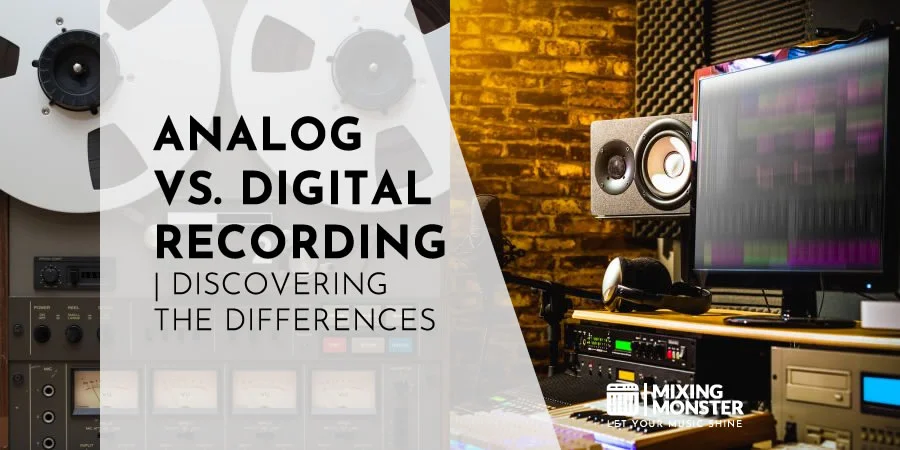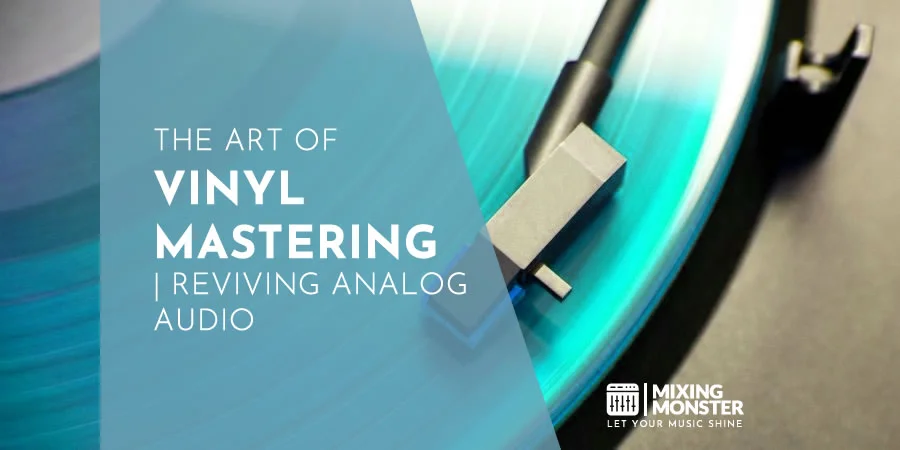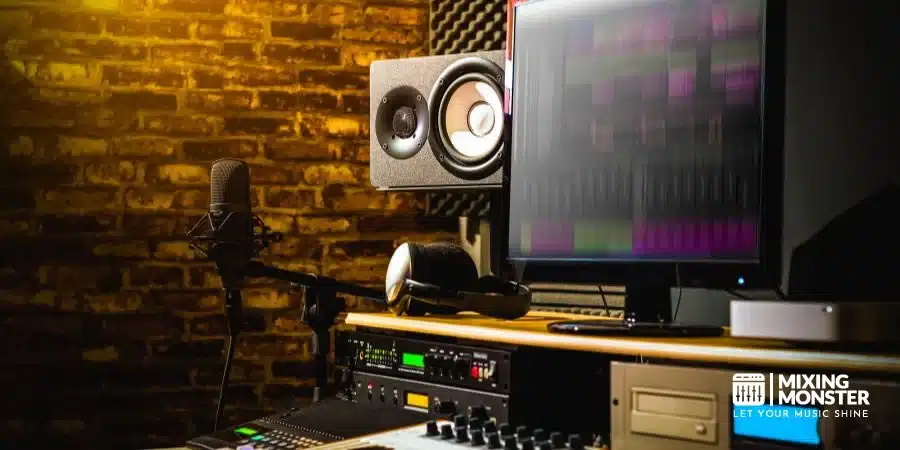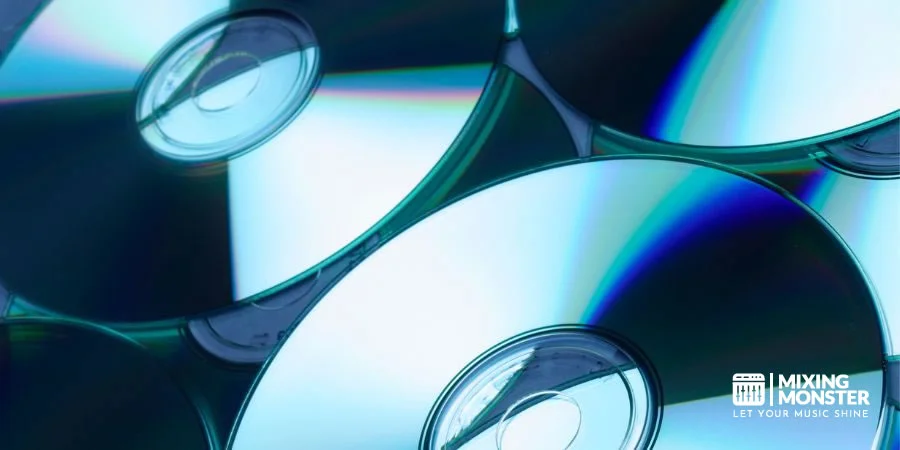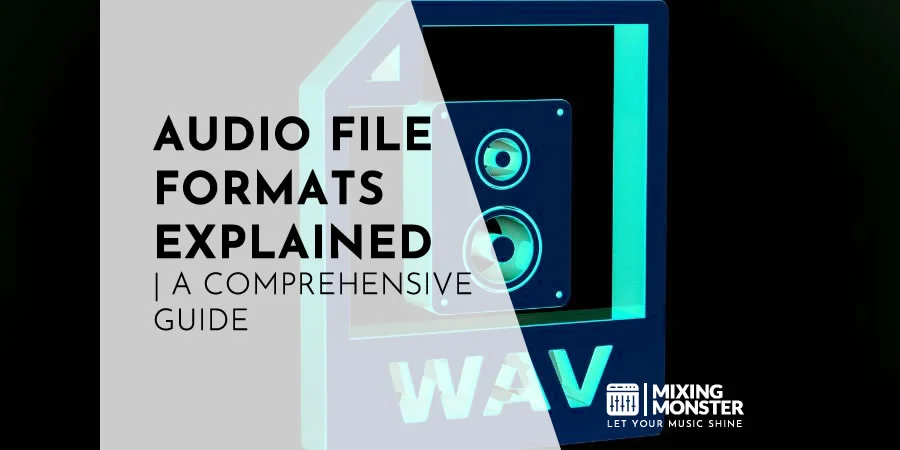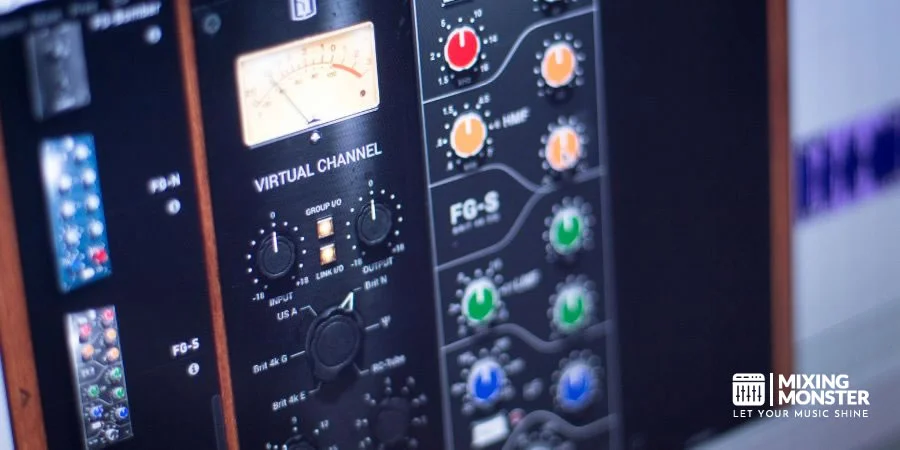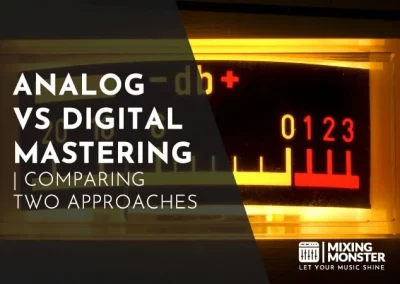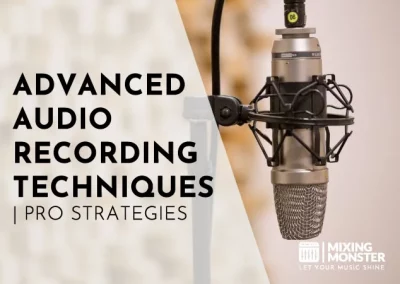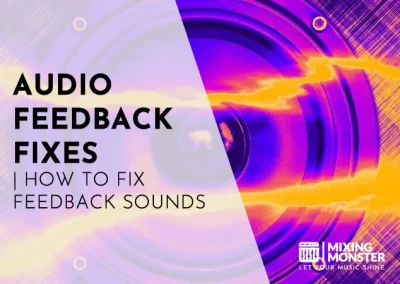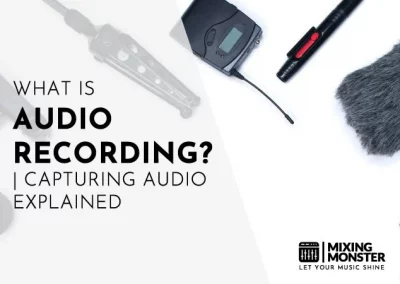The debate between analog and digital recording continues to echo in the sound world. Whether you’re a professional audio engineer or a music enthusiast, understanding the differences between these two recording methods is fundamental. In this article, we’ll delve into the intricate details, showcasing how analog and digital recording have shaped, and continue to influence, the audiotape of our world.
Analog vs. digital recording represents two distinct methods of capturing and reproducing sound. Analog records natural waveforms as they are, offering a warm, rich sound. Digital samples these waveforms and translates them into binary data, producing clear and consistent audio. Each method has its unique advantages and complexities.
Ready to journey into the world of sound recording? Uncover the fascinating intricacies between analog and digital methods and discover how this battle of technologies continues to shape our auditory experiences. Read on, and let’s strike the right chord!
Table Of Contents
1. Introduction To Analog And Digital Recording
2. Detailed Explanation Of Analog Vs. Digital Recording
3. The Transition From Analog To Digital Recording
4. Pros And Cons Of Analog And Digital Recording
5. The Differences Between Analog And Digital Recording
6. The Future Of Recording: Analog, Digital, Or Both?
7. Finding The Right Recording Method For You
8. FAQ

1. Introduction To Analog And Digital Recording
Sound recording is a riveting field that has substantially evolved over the years, thanks in part to technology’s continual development and refinement.
Today, we stand at the crossroads of two key technologies – analog and digital recording. But what are these methods, and how do they contribute to our auditory experiences?
Brief Overview Of Sound Recording
Sound recording captures sound waves, such as speech or music, for playback or editing. It’s a fascinating process, balancing science and art to create a medium transcending linguistic and cultural barriers.
Technology has pushed boundaries since the earliest experiments in sound recording, leading us to a significant debate: analog vs. digital recording, which brings us to the following points.
What Is Analog Recording?
Analog recording is a technique used for the analog storage of audio signals. It’s all about capturing the continuous waveforms of sound in a format that can be replayed. This method records the physical changes, such as variations in air pressure caused by sound waves, onto a physical medium like vinyl or magnetic tape.
In the heyday of sound recording, analog was king, thanks to its natural sound reproduction. Even today, many audiophiles and music enthusiasts vouch for the ‘warm’ and ‘rich’ sound quality that analog recordings offer. But let’s not get carried away, as there’s another player in this game.
What Is Digital Recording?
Digital recording, on the other hand, involves the conversion of analog signals into a digital format. The continuous sound waveforms are broken down into samples and converted into binary data.
The critical point is that the digital recording process represents sound waves as a series of numbers that can be precisely stored and reproduced.
Digital technology has revolutionized the recording industry, bringing immense flexibility and consistency to sound production. But is it necessarily better than analog? We’ll dive into that as we delve deeper into analog vs. digital recording.
Stay tuned as we continue to dissect these intriguing sound recording techniques. Up next, we’ll demystify the principles that define analog and digital recording!
2. Detailed Explanation Of Analog Vs. Digital Recording
Understanding the details behind analog and digital recording methodologies requires a peek into their core principles. Let’s delve into the depths of these systems and learn more about how they capture the sounds that entertain, educate, and inspire us.
Principles Of Analog Recording
Analog recording is grounded in the principle of signal continuity. Simply, it records sound waves in their natural, continuous form. But how exactly does that work?
Understanding How Analog Recording Works
Here’s a quick rundown: imagine a vinyl record – a classic icon of analog technology. As sound waves hit the recording device’s microphone, they cause a diaphragm to vibrate.
This vibration moves a cutting stylus that etches a groove onto the vinyl disc. The groove’s shape corresponds to the original sound wave’s pattern.
Playing back, this recording involves a stylus (commonly known as a needle) running along these grooves. As the stylus traverses the patterned surface, it vibrates, recreating the original sound waves that were captured.
The result is a ‘natural’ and ‘warm’ reproduction of the sound, as many music enthusiasts like to describe it.
Do you want to learn more about this fascinating process? You might be interested in this article:
Principles Of Digital Recording
On the other hand, digital recording embraces a different concept. Instead of capturing continuous waves, it takes snapshots or ‘samples’ of the sound at discrete intervals.
Understanding How Digital Recording Works
Let’s break this down: When sound waves reach a digital recorder’s microphone, it still causes a diaphragm to vibrate like in an analog system.
However, this is where the similarity ends. Instead of etching the vibrations onto a physical medium, an Analog-to-Digital Converter (ADC) takes over.
The ADC samples the sound at regular intervals, known as ‘sampling’. The rate at which these samples are taken is known as the ‘sampling rate’. Each sample is converted into binary data – a series of ones and zeros.
This digitized information is easy to replicate, store, and manipulate without losing the original sound quality.
During playback, a Digital-to-Analog Converter (DAC) converts these binary numbers into an analog signal. The result? A clear, precise, and consistent audio experience.
We’ve unraveled the mechanics behind analog and digital recording. Let’s continue on our journey and explore the recording industry’s transition from analog to digital technology.

3. The Transition From Analog To Digital Recording
Our journey into analog vs. digital recording now takes us to a historical pit stop. The evolution from analog to digital wasn’t just a technological leap but a transformative era that reshaped how we capture, distribute, and consume audio.
History Of Sound Recording
Sound recording had humble beginnings, with the first analog recording systems—phonographs and gramophones—debuting in the late 19th century. These early devices etched sound vibrations onto tinfoil or wax cylinders, paving the way for a thriving industry.
The 20th century saw the advent of magnetic tape and vinyl records, which significantly improved recording quality and endurance. For much of the 20th century, these analog mediums were the gold standard in the music industry, adored for their warm, rich, and natural sound.
Fast forward to the 1970s, and the music world was on the brink of a revolution. The advent of digital technology was about to change everything!
Evolution Of Digital Recording Technology
With the arrival of Compact Discs (CDs) in the 1980s, digital technology made its grand entry into sound. The switch from analog to digital was gradual but steadfast, driven by digital’s precision, consistency, and resistance to physical degradation over time.
Unlike analog, digital recording could reproduce sound without the hisses, pops, and other artifacts commonly associated with vinyl records and magnetic tapes. Plus, digital formats could be easily copied and distributed without losing quality, a factor that revolutionized the music industry and how we consume music today.
From CDs, we moved to MP3s, streaming, and beyond, shaping an era where music is more accessible than ever.
Modern digital audio formats are evolving, trying to balance file size and audio quality. Want to learn more about audio file formats? Here you go:
So, now we’ve navigated the transition between analog and digital recording. Next, we’ll compare these two methods head-on, discussing their pros and cons.

4. Pros And Cons Of Analog And Digital Recording
As a home recording studio owner, the choice between analog and digital recording is more than just a matter of preference—it can significantly impact the quality of your output and the efficiency of your workflow.
Let’s weigh the pros and cons to help you make an informed decision.
Benefits Of Analog Recording
- Natural Sound:
Analog recordings are known for their warm and rich sound quality. They capture the nuances and dynamics of the audio source more faithfully. - Physical Medium:
For many, the tangible aspect of vinyl records and magnetic tapes adds a nostalgic charm and value. - Creative Effects:
Certain analog ‘imperfections,’ such as tape saturation, can be creatively utilized to add character to a recording.
Downsides Of Analog Recording
- Degradation Over Time:
Each playback and copy of an analog recording degrades the quality. The physical medium is also prone to wear and tear. - Less Convenient:
Analog recording requires more maintenance and can be more time-consuming and complex. - Limited Editing Options:
Although some effects are unique to analog, editing is generally more limited and challenging than in digital systems.
Advantages Of Digital Recording
- Consistency:
Digital recordings reproduce the audio without any degradation, regardless of how often it’s played or copied. - Easy Editing:
Digital systems offer extensive editing options, allowing you to manipulate the audio in various ways without losing quality. - Portability And Convenience:
Digital files can be easily stored, backed up, and shared. This is especially beneficial for home recording studios with space constraints.
Disadvantages Of Digital Recording
- Loss Of Analog Warmth:
Some argue that digital recordings lack the natural warmth of analog. However, modern digital systems have come a long way in emulating this characteristic. - Dependency On Equipment And Software:
Digital recording requires a computer, specific software, and sometimes expensive equipment. - Risk Of Data Loss:
Unlike physical analog media, digital files can be lost due to system crashes, data corruption, or lack of proper backups.
Understanding these differences will help you choose the proper recording method for your home studio. Next, we’ll delve deeper into these contrasts, examining the impact of analog and digital on music production.

5. The Differences Between Analog And Digital Recording
As we dive deeper into the analog vs. digital recording discussion, we’ll shed light on how these two methodologies can impact music production, with concrete examples to illustrate each point.
Comparing The Sound Quality
The debate between analog and digital recording can be subjective regarding sound quality. Analog is often lauded for its warm, rich, and natural sound, with an organic distortion that can be desirable in specific musical genres.
For instance, rock music recorded on analog can have a distinct warmth and depth, amplifying its raw energy.
Digital recording, on the other hand, offers a clean, precise, and consistent sound that can be especially beneficial for genres where clarity and precision are paramount, such as classical or electronic music.
Differences In The Recording Process
The recording process is another area where analog and digital part ways. In an analog setting, you might record a band playing live onto a tape, capturing the performance’s raw and spontaneous essence.
Think of The Beatles’ early recordings, where the whole band played together, and the resulting recording had a unique, organic feel:
In a digital environment, you can record each instrument separately, layer them together, and edit extensively to perfect each segment.
This is commonplace in modern pop productions, where artists like Billie Eilish and her producer brother Finneas create complex sonic landscapes from the comfort of their home studio:
The Impact On Music Production
The choice between analog and digital recording also impacts the production process. With analog, limitations like fewer tracks and less editing flexibility can foster creativity within constraints.
On the flip side, digital recording’s extensive editing capabilities can inspire experimentation, allowing for manipulating sounds in ways that aren’t possible in the analog realm.
Armed with this knowledge, you’re in a better position to understand the future of recording. In the next section, let’s look at the current trends and emerging technologies.
6. The Future Of Recording: Analog, Digital, Or Both?
The discourse around analog vs. digital recording inevitably leads us to ponder the future of music production. Are we steering towards an entirely digital era, or does analog still have a role to play?
Recent Trends In Recording Technology
As we navigate the 2020s, digital recording technology continues to advance, pushing the boundaries of what we can achieve in music production. Powerful software and plugins emulate the analog sound with increasing accuracy, blurring the distinction between analog warmth and digital precision.
Meanwhile, an appreciation for analog’s unique qualities persists, with a resurgence in the popularity of vinyl records and even cassette tapes. It indicates that while digital may dominate the market, analog still holds a special place in the hearts of audiophiles and music purists.
Emerging Technologies In Sound Recording
In emerging technologies, we’re witnessing exciting innovations redefining the recording process. Artificial Intelligence, for instance, is being integrated into digital audio workstations, assisting in tasks like mixing, mastering, and even composing music.
On the analog front, new technologies are breathing life into traditional recording methods. High-definition vinyl, for instance, is set to combine the tactile experience of records with improved sound quality.
So, what does this mean for you as a music creator or enthusiast? Let’s tie it all together in our conclusion, and we’ll help you find the suitable recording method for your needs.

7. Finding The Right Recording Method For You
There is no one-size-fits-all answer in the analog vs. digital recording debate. Your choice ultimately depends on your personal preferences, needs, and the resources at your disposal.
Personal Preferences And Needs
Are you a sucker for analog’s warm, natural sound, and do you enjoy its tactile experience? Or do you value the precision, convenience, and extensive editing capabilities of digital recording?
Your personal preferences will play a significant role in determining which method suits you best.
Similarly, your needs—whether you’re a professional music producer, a home studio owner, or a hobbyist—will also influence your choice. Professionals may prefer digital for its versatility and consistency, while hobbyists might appreciate analog’s unique charm and character.
Considerations For Professionals And Hobbyists
From a professional standpoint, digital recording offers the tools and flexibility needed in today’s fast-paced music industry. It’s more cost-effective and efficient and provides vast possibilities for manipulating and perfecting your sound.
However, the resurgence of vinyl and analog equipment shows that there’s still demand for the unique qualities that analog recording brings. For hobbyists or even professionals looking to experiment, analog can offer an entirely different and rewarding experience.
As we’ve seen, both analog and digital recording have their merits. Your unique circumstances, preferences, and the type of sound you want to achieve will guide you in finding the perfect balance. And remember, music is an art—feel free to break the rules and let your creativity dictate your path!
And there we have it, a detailed exploration of analog and digital recording. We hope this guide has been helpful and enlightening, equipping you with the knowledge to make informed decisions in your recording journey.
Happy recording!

8. FAQ
- What Is The Main Difference Between Analog And Digital Recording?
Analog recording captures continuous signals that directly mimic the original sound, while digital recording samples these signals at discrete intervals and translates them into binary data. The result is a ‘natural’ and ‘warm’ sound with analog and a ‘clean’ and ‘precise’ sound with digital.
- Is Analog Or Digital Recording Better For Music Production?
Neither is objectively better. It depends on your preferences, needs, and resources. Analog offers a warm, natural sound, and digital provides precision, convenience, and extensive editing capabilities.
- What Are Some Popular Devices For Analog And Digital Recording?
Popular analog devices include reel-to-reel tape machines and vinyl recorders. For digital recording, digital audio workstations (DAWs) like Pro Tools, Ableton Live, or GarageBand are widely used.
- Is Analog Recording Still Used Today?
While not as prevalent as digital, analog recording is still used by some artists and producers who prefer its unique sound characteristics. The rise in vinyl record sales shows a continuing appreciation for analog sound.
- How Has Digital Recording Changed The Music Industry?
Digital recording has revolutionized the music industry by making recording technology more accessible and affordable. It has opened up possibilities for extensive editing, easier sharing and distribution of music, and even home studio recording.

